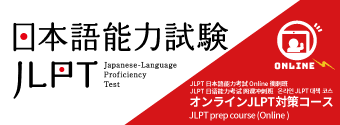“We have an English manual, but the person we were dealing with wasn’t even an English speaker.”
Today, many Japanese companies and local governments face these serious “invisible communication barriers.”
Against the backdrop of labor shortages due to declining birthrates and an aging population, employing foreign workers has become an essential management strategy. Additionally, in administrative services, the number of foreign residents increases year by year, and multilingual support has shifted from “special service” to “essential business operations.”
To address these challenges, many organizations have implemented measures such as “English-language support” and “multilingual translation tool adoption.” However, cries of “it’s not working” continue to emerge from the field.
Why is this?
Because the essence of workplace challenges isn’t “inability to speak English.”
The fundamental issue is: “the inability to communicate Japan’s complex rules and work instructions quickly, accurately, and without misunderstanding—in Japanese—to diverse people (including those from non-English-speaking countries) for whom Japanese is not their native language.”
This article delves deeply into the real difficulties of “foreign employment communication” that many organizations overlook, and thoroughly explains why Kudan Japanese Language School’s “Easy Japanese Course” is now being chosen by many companies and local governments as a fundamental solution.
Is Your Organization Safe? The Reality of “Communication Accidents” Happening in the Field
“We have English manuals, so we’re fine.” “Translation apps solve the problem.”
Many managers may think this way. However, “minor accidents” are already occurring frequently in the field.
Limitation ①: The Illusion of “English Support.” The Increase of Non-English-Speaking Countries: Vietnam, Nepal, Myanmar…
The first reality to recognize is that the countries of origin for foreign workers in Japan have significantly changed.
While workers from English-speaking countries or countries where English education is mainstream were once prominent, technical intern trainees and specified skilled workers now predominantly come from non-English-speaking countries such as Vietnam, Indonesia, the Philippines, Nepal, and Myanmar.
For them, English is a “foreign language” just as it is for us Japanese.
Field leaders struggle to give instructions in unfamiliar English, and recipients respond “Yes” in equally unfamiliar English. How dangerous is this “English telephone game”?
Promoting “English support” is important as a step toward multilingualization. However, this alone won’t solve communication with the majority of non-English-speaking personnel in the field.
Limitation ②: The Pitfalls of Translation Apps (AI). “Nuance” and “Technical Terms” Don’t Get Through
The idea that “just use translation apps” also has pitfalls.
While recent AI translation accuracy has improved, it’s not omnipotent.
- ① Mistranslation of technical/industry terms:
“tamagage” (rigging) at construction sites, “default” in IT, “taxation certificate” in administrative procedures. Can AI accurately translate these instantly? If conveyed incorrectly, the responsibility lies not with the AI but with the Japanese person who gave the instruction. - ② Nuance disappears:
AI cannot accurately convey the Japanese nuance between “narubeku hayaku onegaishimasu” (please do this soon if possible) and “shikyū onegaishimasu” (urgently required, top priority). - ③ Lack of speed:
At government counters, alternating between looking at residents and the AI translation screen. At restaurants, launching the app for every order. These time lags significantly reduce workplace operational efficiency.
Limitation ③: “Staff-Dependent” Personalization. The Organization Can’t Function Without That Person
The most serious problem is “personalization.”
Aren’t you leaving all foreign personnel handling to specific staff members—”Mr./Ms. XX who can speak some English” or “Mr./Ms. YY who is a foreign national”?
If that staff member takes vacation or leaves the company, the organization’s foreign support stops instantly. This is an extremely fragile system.
Moreover, these staff members themselves often harbor complaints that “only I’m struggling” and this can lead to turnover.
The real solution isn’t having a specific “someone” work hard.
It’s having “all Japanese staff” become able to communicate minimally in simple Japanese.
This is the only way to build a strong and resilient organization.
【Challenge Deep Dive ①】Local Governments/Administrative Counters: The Reality of Being Unable to Fully Support Foreign “Residents”
First, let’s dive deeper into challenges in administrative services.
Handling foreign residents is no longer just the job of “International Exchange Divisions.” It occurs as daily business at all counters: “Resident Affairs,” “Health Insurance and Pension,” “Tax,” “Childcare Support,” etc.
Challenge: Administrative Terminology That’s Too Complex. When “Not Getting Through” Relates to “Life”
The language used at local government counters is difficult even for Japanese people.
“Request for revision of resident tax,” “application for national health insurance premium reduction,” “current status notification for child allowance,” “school health examination notification”…
How should these complex procedures be communicated to foreign residents who have just started attending Japanese language school?
- Case 1: Loss of life foundation due to procedural oversight
The simple rule “moving-in notification within 14 days” isn’t communicated, making residence card renewal impossible.
“This is a premium payment notice” isn’t understood, non-payment continues, a reminder notice arrives, and they come for consultation in panic. - Case 2: Emergency information transmission (disaster prevention)
“An evacuation advisory has been issued for XX district.”
“Check the hazard map and evacuate immediately to high ground.”
If this information doesn’t get through, it directly relates to “life.” During disasters, there’s no time to wait for translation apps. Whether Japanese staff can directly shout in simple words “Dangerous! Run to high place now!” can make the difference between life and death.
Why Is “Easy Japanese” Necessary?
What local governments need isn’t “hospitality” but “provision of fair administrative services.”
Budget for hiring English interpreters is limited. Having all staff master English is also unrealistic.
That’s why using the “Japanese language” asset that current “Japanese staff” already possess to simplify and communicate information—this technique called “Easy Japanese”—becomes the most realistic, cost-effective, and fair solution.
【Challenge Deep Dive ②】Companies (HR/Field): The Reality of Being Unable to Utilize Foreign Workers as “Workforce”
Next, challenges at private companies, especially manufacturing, construction, nursing care, and agricultural fields actively promoting foreign employment.
Challenge: The Greatest Management Risk Is Inadequate “Safety Instructions”
For companies, the biggest challenge in foreign employment isn’t “productivity.” It’s “safety (occupational accidents)”.
Because “slight misunderstandings” in Japanese can lead to irreparable serious accidents.
- Case 1: Misunderstanding safety instructions
The field leader shouted “Sono kikai, mada sawaru na!” (Don’t touch that machine yet!).
“Sawaru na” is “sawaru (dictionary form) + na (prohibition)”—intermediate-level Japanese grammar.
An N4-level foreign staff member only heard “sawaru” (touch), touched the machine, and injured their finger. - Case 2: Failure in hazard prediction
Near-miss reports aren’t submitted because they “can’t be written in Japanese.”
Small danger signs like “the scaffolding was slippery” or “there was an unusual sound” aren’t shared, resulting in major accidents.
Challenge: Exhaustion of “Teachers” and Isolation of “Learners”
After safety, the next problems are “productivity” and “retention rate.”
- OJT (onboarding) failure
“Do it like this, quickly.”
“I told you before.”
Japanese instructors become exhausted not knowing how to teach effectively. Foreign workers, unable to understand instructions and repeatedly asking questions, lose confidence thinking “I’m no good” and become isolated. - Turnover due to communication deficiency
Work instructions are possible, but casual conversation isn’t.
“Did you sleep well yesterday?” “What did you do over the weekend?”
Without these casual conversations, foreign staff feel “I’m not valued” and quickly transfer to other companies with higher salaries or better environments.
Why Is “Easy Japanese” Necessary?
What companies need for successful foreign employment isn’t advanced English skills.
It’s the technique of communicating “work instructions that anyone can understand in one go” in Japanese.
Not “Press the emergency stop button,”
but “When dangerous, press this red button.”
Having the “Japanese side” learn this technique is the most reliable “investment” that prevents occupational accidents, increases productivity, and prevents valuable personnel turnover.
【Challenge Deep Dive ③】Education/Service Industries: The Reality of Being Unable to Satisfy “Students/Customers”
Finally, challenges at educational institutions such as universities and vocational schools, and service industries such as hotels and restaurants.
Challenge (Educational Institutions): Complex “Student Life” Rules
University and vocational school counters accepting international students face similar challenges to local governments.
“Course registration,” “credit recognition,” “scholarship application,” “residence status renewal”…
International students whose Japanese ability isn’t yet sufficient must handle these procedures themselves.
- Case: Disadvantage from misunderstanding rules
Not understanding the difference between “required credits” and “elective credits,” failing to meet graduation requirements.
Breaking the rules for “permission to engage in activities other than those permitted” (part-time work permission: within 28 hours per week), making visa renewal impossible.
Student support counter staff mastering “Easy Japanese” is essential to protect international students from risks of “withdrawal” or “illegal stay.”
Challenge (Service Industry): Handling Diversifying “Customers”
With inbound tourism recovering, hotels, restaurants, and retail stores welcoming many foreign tourists.
Here too, “English support OK” alone no longer suffices.
- Case: Non-English-speaking tourists
Chinese, Korean, Thai, French… customer languages are diverse. Hiring staff for all languages is impossible. - Case: Communicating rules
“Please cover tattoos at the hot spring.”
“This item isn’t tax-free.”
“This contains XX allergen.”
If these don’t get through, it leads to major complaints or health issues.
If Japanese staff can communicate using pointing and “Easy Japanese” without translation apps, customer satisfaction (CS) will dramatically improve.
The Solution Isn’t “Translation.” Four Reasons Why Kudan Japanese Language School’s “Easy Japanese Course” Is Chosen

As we’ve seen, field challenges can’t be solved with “English” alone.
Having the Japanese side of your organization master “techniques for making Japanese understandable” is the most fundamental and versatile solution.
Here are four reasons why Kudan Japanese Language School’s “Easy Japanese Course” is the strongest solution for learning this technique.
Reason ①: Taught by “Japanese Education Professionals”—Active Teachers
The greatest strength is direct instruction by “Japanese language education professionals.”
This is different from “simple speaking methods” taught by general business etiquette instructors or consultants.
For over 30 years, we’ve taught Japanese to students from over 70 countries worldwide. That’s why we thoroughly understand:
- Why foreigners make Japanese mistakes (e.g., difference between particles “wa” and “ga”)
- Which words are “difficult” and which are “easy” (e.g., “meeting” is easier than “kaigi”)
- Which grammar is “hard to understand” (e.g., passive form, causative form, double negatives)
based on linguistic mechanisms (expertise).
Because professionals who know inside-out “why it doesn’t get through” teach, you acquire techniques that truly “get through” in the field.

Reason ②: “Fully Customized Training” for Your Company
This course isn’t training that merely reads predetermined textbooks.
We design training content from scratch based on your industry, job type, and “situations you’re actually struggling with now.”
- For local governments: We borrow actual application forms and counter information pamphlets to learn in workshop format “how to make these ‘easy.'”
- For manufacturing: Using actual “safety manuals” and “work instruction documents” as teaching materials, we practically train “how to rephrase to prevent occupational accidents.”
- For service industries: Based on actual “customer service manuals,” we role-play communicating allergy confirmations and prohibitions.
This thorough customization maximizes training satisfaction and field implementation rates.
Reason ③: Practical Training in “Paraphrasing (Rewriting)”
This course isn’t just “lectures.” We spend the most time on “paraphrasing (rewriting)” training.
Easy Japanese Paraphrasing Examples
- (NG) “Dosoku genkin” (No shoes allowed)
→ (OK) “Koko de kutsu o nuide kudasai” (Please take off shoes here) - (NG) “Tōin dewa shinryō dekimasen” (Cannot provide medical treatment at this hospital)
→ (OK) “Koko dewa byōki o miru koto ga dekimasen” (Cannot look at illness here) - (NG) “Jikai no nōki-gen wa 5-gatsu matsu-jitsu desu” (Next payment deadline is end of May)
→ (OK) “Tsugi no okane wa 5-gatsu no saigo no hi made ni haratte kudasai” (Please pay next money by last day of May) - (NG) “Kikai no kadō-chū wa, zettai ni te o furenai koto” (Absolutely do not touch with hands while machine is operating)
→ (OK) “Kikai ga ugoite iru toki, zettai ni te de sawaranai de kudasai. Abunai desu” (When machine is moving, absolutely don’t touch with hands. It’s dangerous)
By repeatedly training to make workplace language “easy,” participants can create “Easy Japanese” themselves by the end of training.
Reason ④: Flexible Implementation Formats (Online/Dispatch/Group)
Training implementation formats can also flexibly accommodate your organization’s needs.
- Instructor dispatch group training:
Instructors visit your company’s meeting rooms or field sites to conduct enthusiastic training centered on group work. - Online training:
Using Zoom etc., participation is possible regardless of location for branch offices nationwide or busy staff. - Private lessons:
Intensive one-on-one learning is also available for executives or HR personnel.
The Future for Organizations That Implement “Easy Japanese”
Implementing the “Easy Japanese Course” in your organization isn’t merely “welfare” or “training.” This is a “management investment” to protect your organization’s future.
1. Fundamental Reduction of Management Risks
Thorough safety instructions minimize occupational accident risks. Eliminating misunderstandings in administrative procedures prevents legal troubles with residents.
2. Improved Productivity/Service Quality
When work instructions are accurately communicated once, rework and mistakes decrease, improving productivity. Smooth customer guidance improves customer satisfaction (CS).
3. Improved Personnel Retention Rate and Becoming a “Chosen Workplace”
“Even though my country’s language or English doesn’t work at this company (workplace), Japanese staff make efforts to communicate understandably.”
This “psychological safety” dramatically improves foreign staff retention rates. Their word-of-mouth creates a reputation that “that company is comfortable to work at,” becoming a major asset in future recruitment activities.
4. “Skill Improvement” for All Staff
“Easy Japanese” techniques aren’t limited to foreign personnel handling.
The skill of “communicating complex things concisely and understandably” becomes “lifelong skills” applicable to all business communications: training Japanese newcomers, handling elderly people, customer presentations, etc.
Process from Inquiry to Training Implementation
The steps to implementation are very simple.
- STEP 1: Inquiry
First, using the form at the bottom of this article or by phone, share your organization’s challenges and requests (even vague ones are fine). - STEP 2: Hearing/Training Program Proposal
Our institute’s specialist coordinator will conduct detailed hearings about your organization’s specific work content, number of participants, budget, and goals. - STEP 3: Training Content Customization/Quotation
Based on hearing content, we’ll create and propose an original training curriculum specifically for your organization and a quotation. - STEP 4: Training Implementation
Japanese language education professionals conduct training at the decided date/time and format (online or dispatch). - STEP 5: Follow-up Support
Even after training implementation, we accept consultations for ongoing support or periodic refresher training.
Summary: To Transform Your Organization’s “Language Barrier” into a “Language Bridge”
Challenges with “foreign employment communication” and “foreign personnel counter service” can no longer be left unaddressed.
And the solution isn’t outsourcing to “English” or “AI,” but having us Japanese ourselves learn “communication techniques.”
“Easy Japanese” isn’t hiring specific interpreters at cost (point-based response), but “surface-level response” that elevates the entire organization’s communication ability.
Kudan Japanese Language School leverages over 30 years of Japanese language education knowledge (E-E-A-T) to help transform your organization’s “language barrier” into a “language bridge” that utilizes diverse personnel.
“Can you handle our industry?” “I’d like to just talk first.”
Any small consultation is welcome. Please share the challenges your organization faces.
▼For those who want to consult about organizational challenges now
【Kudan Japanese Language School】Corporate/Local Government “Easy Japanese Course”
















